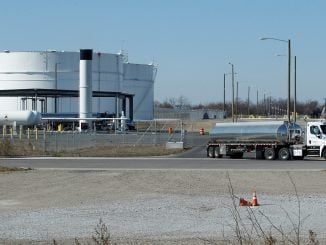As more Americans line up to receive their first doses of the COVID-19 vaccine, a number of questions remain about why certain parts of the country are so far behind in vaccine distribution, planning, and execution. Case counts in North Carolina continue to rise and Governor Cooper recently extended the state’s modified Stay At Home Order while Department of Health and Human Services Secretary Dr. Mandy Cohen issued a new warning against residents leaving home for any reason other than work, school, exercise, healthcare needs or groceries. Compounding an already deteriorating situation, North Carolina’s vaccination rate is severely lagging to the point that Gov. Cooper called in the state National Guard to help administer shots more quickly. The six person “immunization strike teams” are travelling the state and working at various vaccine sites.
The Centers for Disease Control shows that North Carolinians are receiving their first dose of the vaccine at a slower rate than much of the rest of the country (N.C.’s rate of 966 vaccinations per 100,000 people is the sixth lowest in the nation.) Dr. Cohen recently told media outlets that some of the state’s health departments and hospitals have used all of their vaccine allocation, while others are grappling with issues ranging from data entry to information technology issues to not having enough staff to actually administer vaccine.
DeAnne Brooks, chief pharmacy officer for Cone Health in Greensboro said in a recent interview that another problem she was seeing was with delivery and the need to monitor patients for longer periods. “Most vaccines, we can take the vaccine to the people. This is a vaccine that we need to bring the people to the vaccine, and we don’t want to have long lines of people wrapped around the building to administer the vaccine. The other challenge in getting the vaccine out faster is that people have to be observed for 15 minutes after they get the shot.”
Cohen also cites reporting issues at the local level. In response she says DHHS will begin rewarding facilities for accurate recording and management, while indirectly punishing others. According to Amanda Fuller Moore, a pharmacist in the state’s public health department, the state will allocate supply to those facilities who are in need because they are effectively administering vaccines. She says that the CDC may also consider this data in determining how to allocate constrained supply to the various states. “So, any location’s failure to provide accurate and complete data can impact the vaccine supply to the entire state.”
Unfortunately, since the pandemic first set in and Operation Warp Speed was put into motion, experts have been warning of potential problems based on the global supply chain and concerns about vaccine delivery and storage. In December the Supply Resource Chain Cooperative in NC State’s Poole College of Management called on two of the country’s leading supply chain experts to explain in detail potential problems and challenges. One month later, it seems they were largely correct. Dr. Robert Handfield, PhD is the Bank of America University Distinguished Professor of Supply Chain Management at NCSU and the Executive Director of the Supply Chain Resource Cooperative. He, along with Dr. Daniel J. Finkenstadt, PhD, assistant professor in the Graduate School of Defense Management at the Naval Postgraduate School with expertise in government contracting, market intelligence and business to government markets, pointed to several hiccups and bottlenecks that are leading to the lag in vaccine distribution. These include national security issues including theft, sabotage and counterfeiting, shortage of personnel and supplies, lack of coordination, limited capacity, vaccine damage, gaps for rural areas, and misinformation about vaccines and tracking.
In a recent update to his December discussion, Handfield says vaccine delays are going to continue and says there are still severe bottlenecks in cold chain capabilities. “Using data from the Homeland Infrastructure Foundation, we identified what the public refrigerated warehouse map actually looks like. Major urban centers, especially the Northeast and Midwest, are in pretty good shape. But then you have this huge gap in the center of the country – the Dakotas, Montana, Wyoming, New Mexico, parts of West Texas – where there isn’t a lot of cold storage capacity.”
He also mentions bottlenecks once the vaccines do reach N.C. “A recent article posted by Dan Stanton and Phil Palin note that several causes are implicated: lack of funding, Christmas distractions, fatigue among public health professionals, health care providers being seriously overextended, stockpiling for rollout to long-term care facilities, lagging throughput data, and much more,” said Handfield.
“This makes a lot of sense. If you think about it, states and healthcare providers are already overwhelmed, and turnover among healthcare workers have never been greater,” he noted.
Finkenstadt sees problems with data tracking and information sharing as two of the leading concerns. “Bottom line, we still have disjointed information sharing in the process. Information is the critical commodity during this emergency. What we don’t know can and will hurt us. Make no mistake, this is a huge logistical challenge and one that is riddled with litigious landmines. Individual medical data is very sensitive and highly protected in America as it should be. But, when we are all after a common good (vaccine) that has far fewer supply allocations that need points, we may have to get creative and take personal liberty risks for public safety gains.”
That sentiment, however, while shared by many academics and public health officials, could be another deterrent in vaccine compliance, as national polls, as well as numbers in some European countries such as France and Spain, indicate that sharing personal data seems to be a leading cause for hesitation among citizens.


